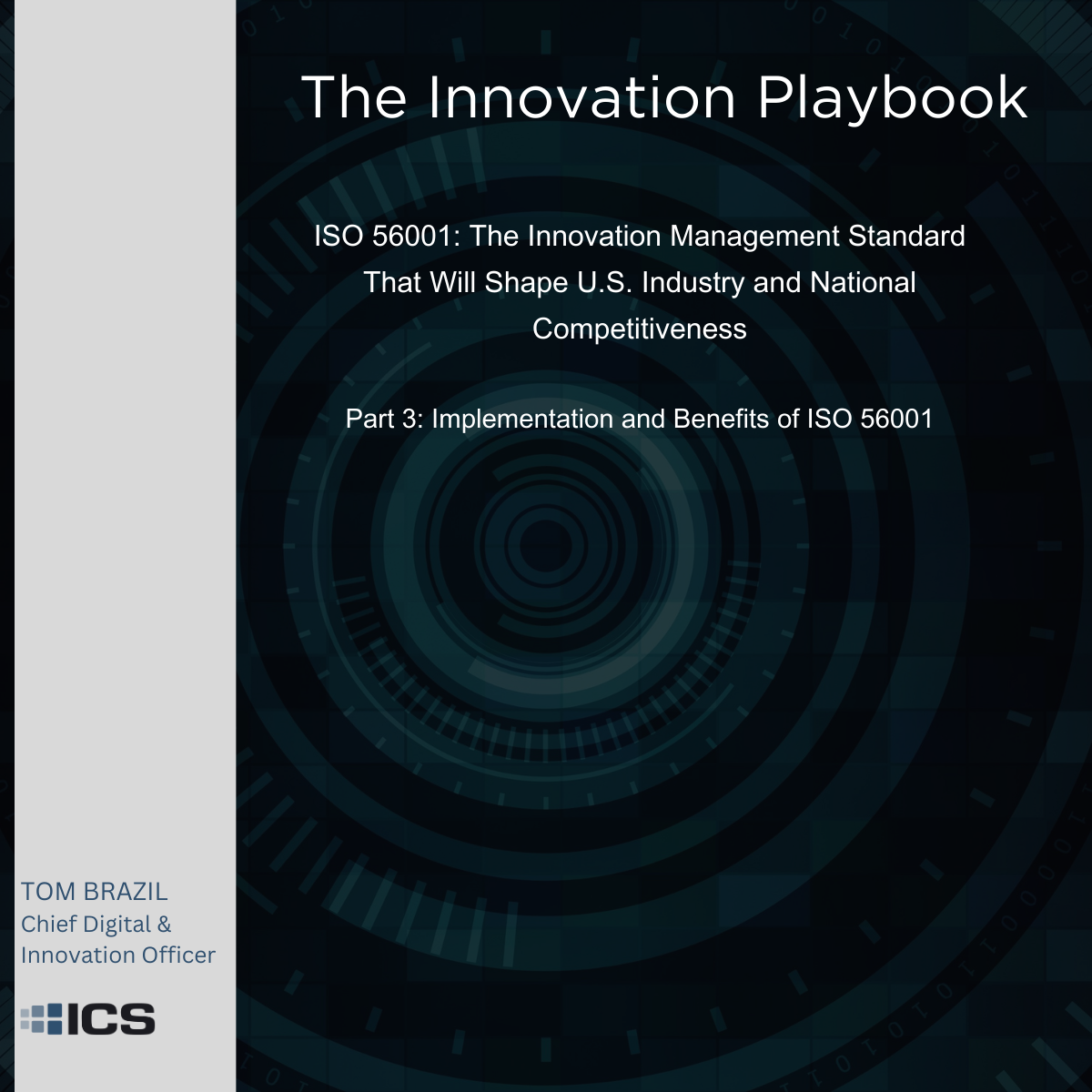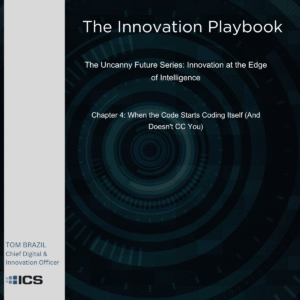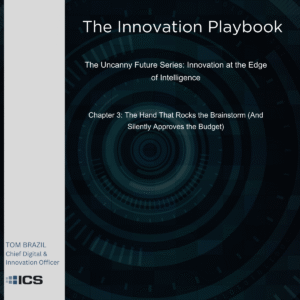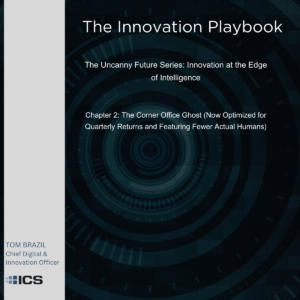In our previous articles, we explored the fundamentals of ISO 56001 and its key components and structure. If you’ve followed along, you now understand that ISO 56001 isn’t just about encouraging innovation—it’s about managing it strategically, measuring its impact, and making it repeatable.
But here’s the question many leaders are asking:
🚀 How do we implement ISO 56001 effectively, and what benefits can we expect?
This week, we focus on practical steps to implement ISO 56001, common challenges businesses face, and why adopting this standard is a game-changer for U.S. industry and government.
Getting Started: First Steps to Implement ISO 56001
For organizations looking to implement ISO 56001, the key is starting with a clear plan and integrating innovation into existing business structures.
Step 1: Conduct a Readiness Assessment & Gap Analysis
Before diving into implementation, organizations must first understand:
✅ What innovation capabilities already exist?
✅ What are the gaps in leadership, processes, and performance measurement?
✅ How does innovation currently align with business objectives?
A gap analysis will help identify areas where structured innovation management can improve efficiency, reduce risks, and drive measurable results.
Step 2: Define an Innovation Strategy Aligned with Business Goals
ISO 56001 requires organizations to integrate innovation into their overall corporate strategy. This means setting:
✅ Clear innovation objectives (e.g., developing new AI-driven defense systems, launching next-gen medical devices).
✅ Strategic focus areas (e.g., digital transformation, sustainability, advanced manufacturing).
✅ KPIs to measure innovation success (e.g., percentage of revenue from new products, time-to-market for innovations).
📌 Example: A federal agency implementing ISO 56001 might define innovation priorities in cybersecurity, AI for intelligence analysis, or sustainable energy solutions.
Step 3: Secure Leadership Buy-In and Resource Commitment
Leadership plays a critical role in ISO 56001 success. Without executive-level commitment, innovation efforts will remain siloed or underfunded.
Senior leaders must:
✅ Establish an Innovation Steering Committee to oversee ISO 56001 implementation.
✅ Allocate time, budget, and personnel to innovation initiatives.
✅ Foster a risk-tolerant culture where experimentation is encouraged.
📌 Example: At ICS, our governance model ensures that we align our R&D efforts with organizational strategic objectives as part of our Dynamic Innovation Portfolio Management.
Step 4: Develop an Innovation Management System (IMS)
The Innovation Management System (IMS) is the heart of ISO 56001. It includes:
✅ Structured processes for generating, validating, and scaling ideas.
✅ Governance policies to define decision-making roles in innovation.
✅ Cross-functional teams to break down silos and encourage collaboration.
A robust IMS ensures that innovation isn’t just a sporadic effort—it’s embedded into the organization’s DNA.
📌 Example: ICS’s Agile Innovation Management System includes a stage-gate innovation process, which minimizes financial risk and ensures only high-potential innovations move forward to full development.
Step 5: Establish Performance Measurement & Continuous Improvement
ISO 56001 mandates organizations to track, measure, and refine innovation performance.
Key performance metrics could include:
✅ Time-to-market for new innovations.
✅ Return on investment (ROI) for R&D spending.
✅ Success rate of new product launches.
✅ Intelligent Failure Rate.
✅ Employee participation in innovation initiatives.
Regular internal audits and innovation reviews ensure that organizations continuously improve their innovation management processes.
📌 Example: ICS has a documented and well-defined Agile Innovation Program and Project Management (AIPPM) process that integrates all of these best practices.
Common Challenges in Adopting ISO 56001 (And How to Overcome Them)
While the benefits of ISO 56001 are clear, implementation comes with challenges—especially for organizations new to structured innovation management.
Challenge 1: Resistance to Change
Many organizations struggle with cultural resistance, as employees and leaders may be hesitant to adopt a structured innovation framework. In the past, innovation “experts” were free to define their own language of innovation, which in fact has led to many failures. In 2017 there were 500k people on LinkedIn with the word Innovation in their title, and that ballooned to over 5 million in 3 years. Sadly, that number has cratered again as too many people failed at implementing their own style of innovation processes, not understanding the importance of the integration of Strategy, Portfolio, Process, Culture, and Infrastructure, and most importantly – not understanding the order in which they should be integrated!
✅ Solution: Conduct ISO 56001 training and leadership workshops to demonstrate the value of structured innovation. Create innovation champions within departments, but start with leadership and focus on culture first. If you don’t have the backing of leadership from the start, failure will be imminent.
📌 Example: Tesla fosters a culture of continuous experimentation, rewarding employees for taking calculated risks in EV and AI development.
Challenge 2: Lack of Clear Innovation Metrics
Many organizations fail to define clear KPIs for innovation success, making it difficult to measure impact.
✅ Solution: Develop a dashboard with real-time innovation metrics, tracking everything from R&D spending efficiency to innovation adoption rates. At ICS, we have SMART Key Performance Indicators (KPIs) oriented under Culture, Process, Portfolio, Risk, Cost, and other important categories.
📌 Example: Tracking the average age of each project by stage ensures we keep efforts moving at a steady pace, and identifies areas where we can continuously improve.
Challenge 3: Integrating ISO 56001 with Existing Standards
Organizations that already follow ISO 9001 (Quality) or ISO 27001 (Cybersecurity) may think it will be a struggle to integrate ISO 56001 into their existing processes.
✅ Solution: Map ISO 56001 requirements to existing compliance frameworks, ensuring that innovation is aligned with quality and security goals. If your other existing standards are ISO Management System Standards, half the battle is already won.
📌 Example: At ICS, we’ve integrated our ISO 56001-aligned Agile Innovation Management System into our Quality Management System. ISO 9001 already required us to continually update and maintain the current Context of the Organization (COTO), and since both a Management System Standards, it was a seamless fit. Many DoD contractors in the Defense Industrial Base are already ISO 9001 compliant, which makes ISO 56001 adoption much simpler.
Why U.S. Organizations Should Adopt ISO 56001: Key Benefits
For businesses and government agencies, ISO 56001 is not just about compliance—it’s about strategic advantage. Organizations that implement structured innovation management can see tangible benefits:
1. Accelerated Innovation & Faster Time-to-Market/Time-to-Production
2. Higher ROI on R&D Investments
3. Stronger National & Industry Competitiveness
4. Improved Collaboration & Open Innovation
For the U.S. economy and defense sector, adopting ISO 56001 ensures that American companies stay ahead of global competitors, as ISO 56001 encourages cross-industry and government-private sector collaboration, leading to stronger partnerships in defense, technology, and energy sectors.
What’s Next? Certification & Compliance
Now that we’ve covered how to implement ISO 56001 and its key benefits, the next step is understanding:
- How certification works
- Compliance requirements
- How ISO 56001 integrates with other ISO standards
That’s exactly what we’ll cover in Part 4: Certification and Compliance next week.
Let’s Discuss!
How ready is your organization to adopt ISO 56001 and manage innovation systematically? What challenges do you anticipate? Share your thoughts in the comments!
Follow this series to stay ahead of the curve on ISO 56001 and its impact on U.S. innovation.







